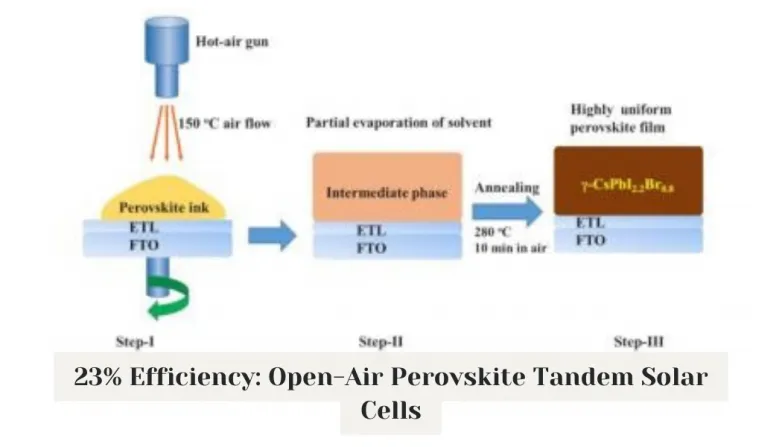23% Efficiency: Open-Air Perovskite Tandem Solar Cells
Dec 4, 2023 04:10 PM ET
- Chonnam National University researchers have developed a hot air deposition technique for processing tandem solar cells that is simpler, more efficient and requires no humidity-controlled environment. The team achieved a 23.07% efficiency rating, 65°C & 85°C thermal stability, and a 21.82% efficiency for a practical 1 cm2 cell size. Further development on track for a 29.1% practical efficiency.

Researchers from Chonnam National University in South Korea have developed a dynamic hot air deposition technique for processing perovskite-organic hybrid tandem solar cells, which has led to a 23.07% efficiency rating while utilizing solution-based processes and an organic cation passivation to reduce VOC loss. This simplifies the production process and eliminates the need for humidity-controlled environments. The teams' cell is more stable at 65 °C and 85 °C thermal stress than at room temperature, and can reach up to 21.82% efficiency in a practical 1 cm2 cell size. Further encapsulation and development of the tandem solar cell architecture is on track to eventually reach a 29.1% practical efficiency.
What Efficiency Was Achieved With Chonnam National University's Perovskite-Organic Hybrid Tandem Solar Cell?
- The tandem solar cell developed at Chonnam National University has achieved an efficiency rating of 23.07%.
- By using the dynamic hot air deposition technique, it is possible to simplify the production process and eliminate the need for humidity-controlled environments.
- The tandem solar cell is more stable at higher temperatures than at room temperature and can reach a practical 1 cm2 cell size efficiency of 21.82%.
- Further encapsulation and development of the tandem solar cell architecture are projected to reach a practical efficiency of 29.1%.
- The technology could be used to reduce costs and increase the efficiency of renewable energy production.
Also read

